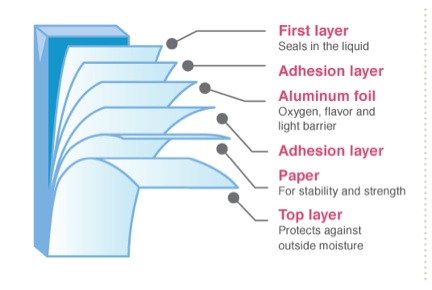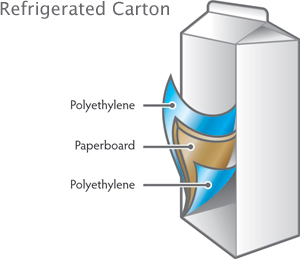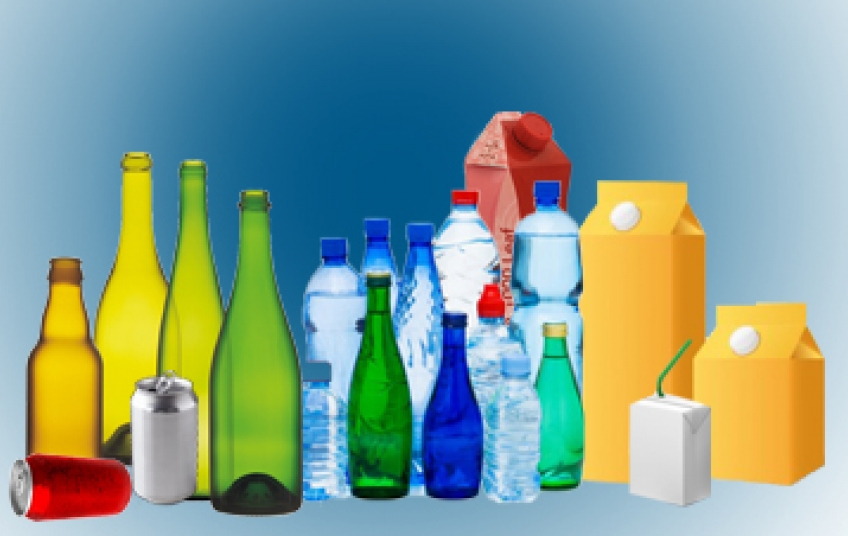Beverages come in a variety of packaging, from cans to bottles to cartons. However, the most recently introduced packaging is the carton. While cartons are usually served with a straw to punch through and drink from, they have started putting caps on them. Cartons are efficient, recyclable, and easy to ship.
History
A Swedish man named Ruben Rausing invented a box similar to a carton in the 1960s. In 1963, Rausing was trying to figure out a more efficient method to get milk to the market. He needed a container that was smaller and less cumbersome than the metal canisters being used. Rausing developed a precursor to the juice box: a brick-shaped box he named the Tetra Brik. Because of their rectangular shape, Tetra Brik saved space. The juice box was officially incorporated in the U.S. market in 1980. The carton took off in the market when Minute Maid launched the first juice to contain calcium and vitamins.
What is a Carton made of?
Cartons are typically made up of six layers of paper, polyethylene, and aluminum foil. The paper provides stiffness and strength which gives the package its brick shape. Polyethylene serves two purposes. On the inner most layer, it forms the seal that makes the package liquid tight. On the exterior, it provides a protective coating that keeps the package dry and provides a printing surface for nutritional and marketing information. The aluminum foil forms a barrier against light and oxygen, eliminating the need for refrigeration or preservatives to prevent spoilage.
 How it's Made
How it's Made
Design and Manufacturing Process
There are several sizes of cartons but they are limited to basic designs. The rectangular, brick-shaped design was designed for convenience during transport. The materials the cartons are made form help to keep the beverages inside safe and fresh. The drinking mechanism can also vary from a straw to a cap. Before beginning of the manufacturing process, the liquid is sterilized outside the package, following extreme high temperature for a short time, and then cooled before being poured into the carton. This process, called flash heating and cooling, reduces energy usage and nutritional loss during sterilization.
- The raw paper, which is attached to a mother roll is printed with the appropriate marketing and nutritional information to which the layers of polyethylene and aluminum are added and attached together by using extrusion lamination equipment.
- Then, the carton blanks or sleeves are ready for cutting process and sterilization. A programmable logic controller (PLC) monitors and controls the filling machine run by an operator.
- The inner layer of the sleeve is then thermally heated. The sleeves are extracted individually by suction, shaped into a rectangle, and slid onto a mandrel. Then the sleeve bottoms are formed and sealed, creating a carton base with the open top.
- After that, the cartons enter the aseptic zone, where filters sterilize fresh air. Once in the aseptic zone, the cartons are sterilized with hydrogen peroxide vapor. Sterile air is heated and blown into the cartons repeatedly to dry out the hydrogen peroxide, while a fan extracts vapors from the aseptic zone.
- Finally, once the cartons are sterilized, they are filled with the pre-sterilized product.
Types of Cartons
There are generally two types of cartons- shelf-stable and refrigerated. Shelf stable cartons have a thin layer of aluminum. They contain on average 74% paper, 22% polyethylene and 4% aluminum, whereas refrigerated cartons contain about 80% paper and 20% polyethylene.
"Cartons are composed of six layers of materials. There are two different types of cartons, both illustrated below."


Impact on the Environment
When cartons first came onto the market, environmental groups were worried about the effect that they could have on the environment. This led to the formation of the Aseptic Packaging Council (APC) in 1989. Since its inception, the APC has been working closely with communities nationwide to encourage the inclusion of cartons in recycling programs. In Memphis, Cartons are recyclable through Curbside Recycling and Drop-off recycling programs. Cartons are light-weight and have a great product to package ratio (94% product & 6% package). Products packaged in cartons are transportation efficient. In general, the same amount of product can be shipped in fewer trucks which leads to less fuel and less greenhouse gas emissions. Big or small, recycle them all! Cartons are recyclable.
Along with being eco-friendly, the aseptic filling process itself requires less energy than traditional canning and bottling methods. Manufacturers also point out that packaging makes up only 4% of the weight of a filled aseptic container in contrast to filled glass bottles, which are typically 30-40% packaging. This leaves less packaging to dispose of when dealing with cartons.
That’s a Wrap!
In conclusion, cartons are an environmentally friendly solution to beverage packaging. It is recyclable, formed through energy efficient processes, and have a small package-product ratio. Since its release into the market in 1980, cartons have been a popular packaging method amongst many companies and manufacturers.
References
http://www.recyclecartons.com/why-juice-box-milk-carton-recycling-matter/#text-19
https://en.wikipedia.org/wiki/Juice box_ (container)
http://www.encyclopedia.com/doc/1G2-2897100054.html
https://www.google.com/?gws_rd=ssl#q=cartons+recyclable
http://www.milkunleashed.com/images/aseptic-milk-packaging-layers.gif


































